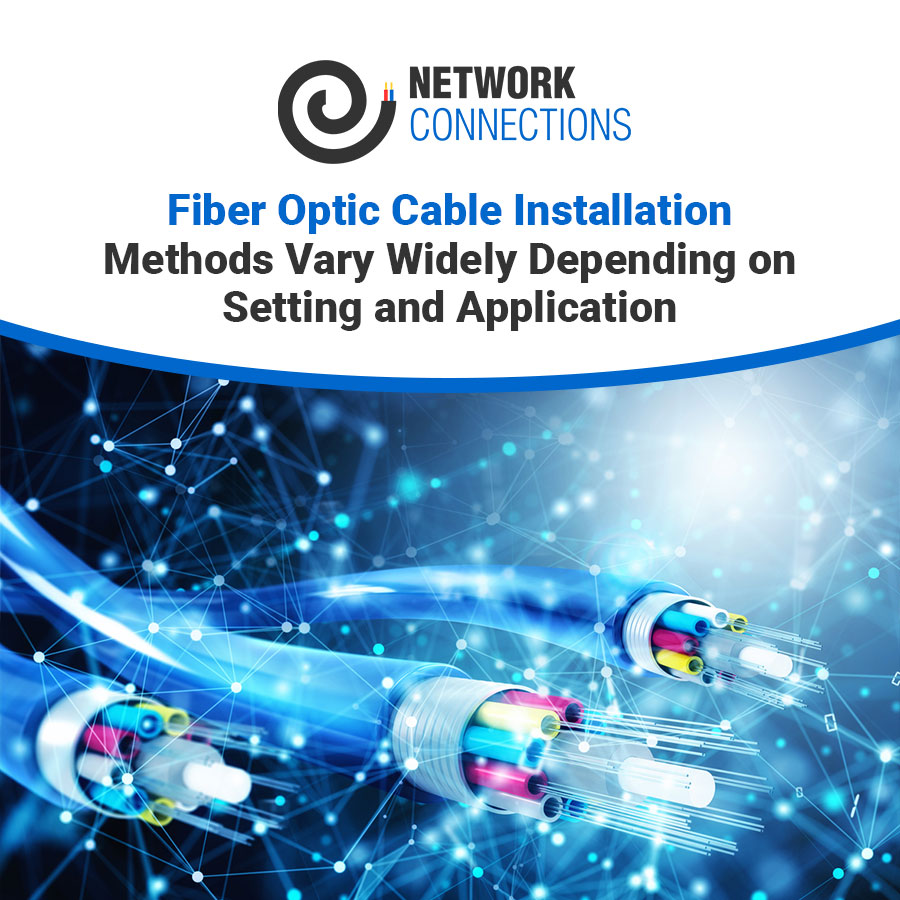Fiber optic cable installation occurs in many different settings and for the purpose of many different applications. Therefore, the actual fiber optic cable installation process varies widely between different locations and scenarios. One of the most common applications for fiber optic cables is for communication purposes. Even for communication applications, the process for fiber optic cable installation varies widely between interior and exterior settings.


“Outside plant” fiber optic cable installation occurs primarily outside. These cables are used in telephone networks, utilities and metro area networks. The cables are generally directly buried through a plowing process, and mostly single mode cabling is used in this setting. Not all outside plant fiber optic cabling ends up underground. It can also be strung onto poles, pulled through underground conduit, or even be installed underwater. Many people don’t realize that there is even a network of fiber optic cables spanning the world’s oceans, connecting our continents and the people on them.
You might be more familiar with “premises” fiber optic cable installation. This occurs mainly inside buildings and campuses. These cables are shorter in length and are mostly multimode. They can be used for local area networks (LANs) and closed-circuit television systems (CCTVs). Inside, fiber optic cable installation can occur along raceways, in cable trays that are placed in the ceiling or floor of the building, as well as in hangers or through conduit.
It is important to have your fiber optic cable installation performed by someone who is trained and qualified for the job. There are special tools, safety gear and many components to designing and installing your system to make sure that it works correctly and provides you the connectivity you need for your unique setting and application.

